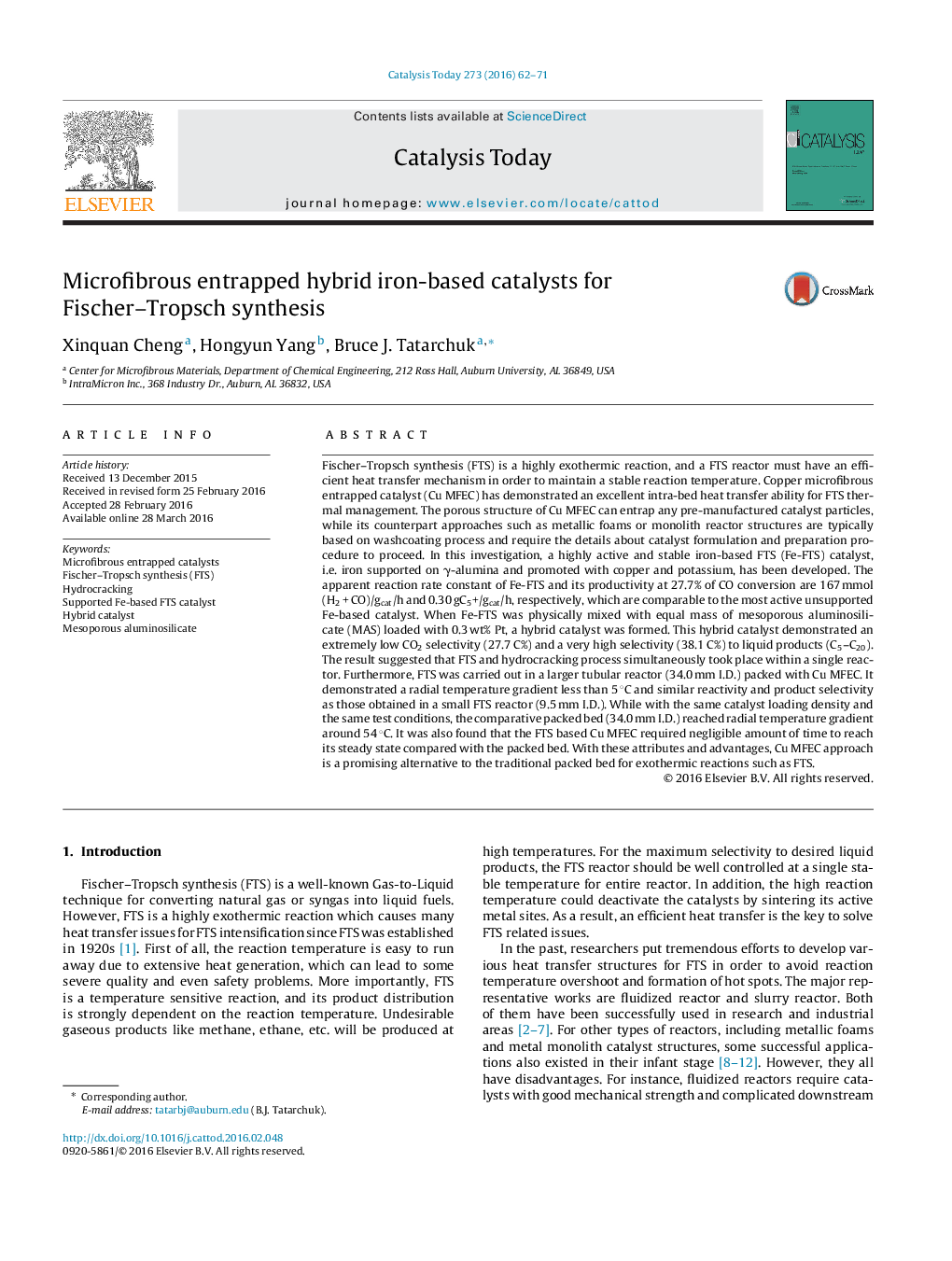| کد مقاله | کد نشریه | سال انتشار | مقاله انگلیسی | نسخه تمام متن |
|---|---|---|---|---|
| 53223 | 46955 | 2016 | 10 صفحه PDF | دانلود رایگان |
• A highly active and stable iron-based FTS catalyst has been developed.
• Hybrid catalyst simultaneously demonstrated FTS and hydrocracking activities.
• Cu MFEC structure showed an excellent intra-bed heat transfer ability.
• FTS reaction has been successfully scaled up via Cu MFEC structure.
Fischer–Tropsch synthesis (FTS) is a highly exothermic reaction, and a FTS reactor must have an efficient heat transfer mechanism in order to maintain a stable reaction temperature. Copper microfibrous entrapped catalyst (Cu MFEC) has demonstrated an excellent intra-bed heat transfer ability for FTS thermal management. The porous structure of Cu MFEC can entrap any pre-manufactured catalyst particles, while its counterpart approaches such as metallic foams or monolith reactor structures are typically based on washcoating process and require the details about catalyst formulation and preparation procedure to proceed. In this investigation, a highly active and stable iron-based FTS (Fe-FTS) catalyst, i.e. iron supported on γ-alumina and promoted with copper and potassium, has been developed. The apparent reaction rate constant of Fe-FTS and its productivity at 27.7% of CO conversion are 167 mmol (H2 + CO)/gcat/h and 0.30 gC5+/gcat/h, respectively, which are comparable to the most active unsupported Fe-based catalyst. When Fe-FTS was physically mixed with equal mass of mesoporous aluminosilicate (MAS) loaded with 0.3 wt% Pt, a hybrid catalyst was formed. This hybrid catalyst demonstrated an extremely low CO2 selectivity (27.7 C%) and a very high selectivity (38.1 C%) to liquid products (C5–C20). The result suggested that FTS and hydrocracking process simultaneously took place within a single reactor. Furthermore, FTS was carried out in a larger tubular reactor (34.0 mm I.D.) packed with Cu MFEC. It demonstrated a radial temperature gradient less than 5 °C and similar reactivity and product selectivity as those obtained in a small FTS reactor (9.5 mm I.D.). While with the same catalyst loading density and the same test conditions, the comparative packed bed (34.0 mm I.D.) reached radial temperature gradient around 54 °C. It was also found that the FTS based Cu MFEC required negligible amount of time to reach its steady state compared with the packed bed. With these attributes and advantages, Cu MFEC approach is a promising alternative to the traditional packed bed for exothermic reactions such as FTS.
Copper microfibrous entrapped catalysts possess excellent intra-bed thermal conductance and have been successfully used to scale up highly exothermic reactions such as Fischer–Tropsch synthesis.Figure optionsDownload high-quality image (219 K)Download as PowerPoint slide
Journal: Catalysis Today - Volume 273, 15 September 2016, Pages 62–71
